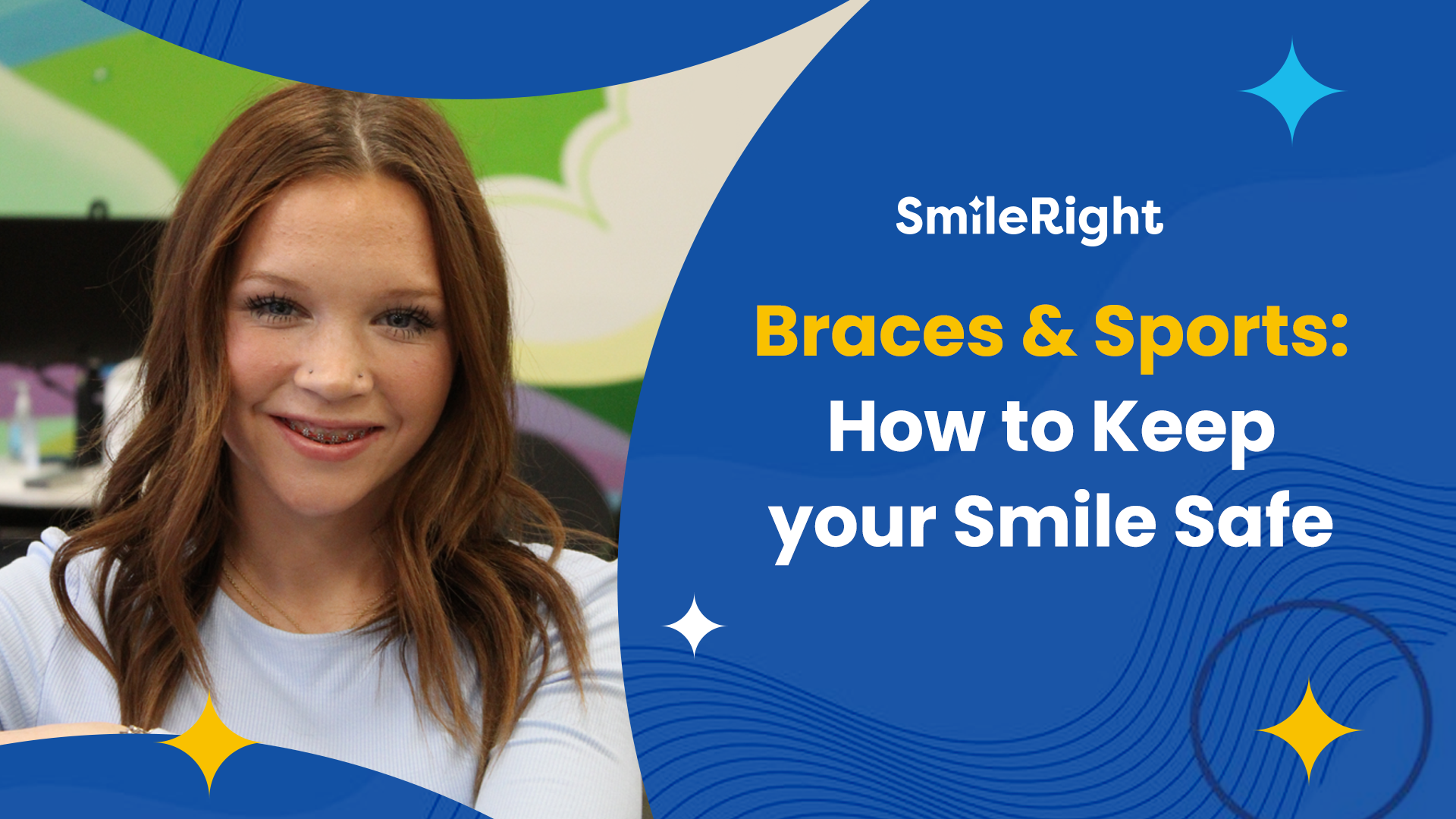Smile Transformation: The Wonders of Traditional Braces at SmileRight

Source: Dr. Marketing
In the pursuit of enhancing both your appearance and self-assurance, a radiant smile plays a pivotal role. At SmileRight, we recognize the remarkable impact a confident smile can have on your life. For generations, traditional braces have stood as a reliable solution for individuals seeking to perfect their dental alignment. In this comprehensive blog post, we delve deep into the realm of traditional braces, unraveling their mechanics, and shedding light on why they remain a steadfast choice for orthodontic treatment.
The Time-Tested Elegance of Traditional Braces
In the realm of orthodontic care, traditional braces stand as a testament to the timeless craftsmanship and expertise that have defined dental treatment for generations. These elegant devices, steeped in history, have continually proven their worth by delivering effective and enduring results.
Masterfully Designed Components
At the heart of traditional braces lie intricately designed components — brackets, wires, and bands — each meticulously crafted to serve a specific purpose in the alignment process. The brackets, delicately bonded to your teeth, act as resilient anchors. They provide the foundation upon which the entire orthodontic treatment rests. These brackets are not just metal pieces; they are a product of meticulous engineering, designed to withstand the complexities of the realignment journey.
Understanding Traditional Braces

Traditional braces, also commonly referred to as metal braces, have stood the test of time in the realm of orthodontic treatment, remaining a steadfast choice for countless patients across generations. Their enduring popularity can be attributed to several compelling reasons, highlighting why they continue to be widely embraced by orthodontic professionals and patients alike.
Unmatched Effectiveness
The fundamental design of traditional braces, consisting of small metal brackets affixed to each tooth and connected by a wire, has proven exceptionally effective in correcting various dental issues. Regardless of the complexity of the misalignment, traditional braces can address a wide spectrum of problems, ranging from mild to severe. This versatility ensures that patients of all ages can benefit from their corrective power, making them a go-to option for orthodontists aiming for precise and comprehensive treatment.
Reliability and Durability
One of the key virtues of traditional braces lies in their durability. Constructed from robust materials, these braces can endure the challenges posed by orthodontic adjustments. The resilience of metal braces means they can withstand the pressure applied during realignment, leading to quicker and more efficient corrections. This durability not only ensures the effectiveness of the treatment but also provides patients with confidence in the stability of their orthodontic devices throughout the course of their treatment.
Cost-Effectiveness and Accessibility
In a world where healthcare costs can be a significant concern, traditional braces offer a practical solution. Compared to some of the newer orthodontic options available, traditional braces are generally more cost-effective. This affordability makes them accessible to a broader range of patients, allowing individuals from diverse backgrounds to benefit from orthodontic care without compromising on the quality of treatment. The economic viability of traditional braces ensures that orthodontic solutions remain within reach for families in Houston, Texas, promoting oral health and overall well-being without imposing undue financial strain.
In essence, the enduring appeal of traditional braces can be attributed to their ability to provide versatile, reliable, and cost-effective orthodontic treatment. As a time-tested method, they continue to transform smiles and improve lives, embodying the essence of accessible and effective healthcare in the field of orthodontics.
How Do Traditional Braces Work?

Understanding the intricate mechanics behind traditional braces unveils the sophisticated science that powers their effectiveness. In this exploration, we dissect the meticulous process through which these braces work, illuminating the precise techniques that lead to transformative smiles.
Brackets and Bands: Precision in Placement
At the heart of traditional braces lie metal brackets, meticulously bonded to the surface of each tooth. These brackets serve as anchors, providing a stable foundation for the orthodontic apparatus. Additionally, bands encircle the molars, ensuring every tooth, regardless of its position, is accounted for in the realignment process. The strategic placement of these brackets and bands lays the groundwork for the controlled movement of your teeth.
Archwire: Guiding Transformation with Finesse
The archwire, a slender yet resilient metal wire, threads through each bracket with precision. This wire isn't just a mere component; it's a silent architect of your smile. Applying constant, gentle pressure on the brackets, the archwire exerts a force that guides your teeth toward their intended positions. It's a subtle yet powerful force, gradually coaxing your teeth into alignment over time. This process ensures a gradual and comfortable shift, allowing your teeth to adapt naturally to their new configuration.
Elastics and Adjustments: Fine-Tuning for Perfection
Orthodontic treatment isn't merely about the initial setup; it's a dynamic, evolving process. Rubber bands, aptly named elastics, play a crucial role in this ongoing adjustment. These elastics are strategically placed to correct bite issues, ensuring that your upper and lower teeth align harmoniously. Moreover, periodic adjustments conducted by skilled orthodontists are pivotal. These adjustments are akin to tuning a musical instrument, ensuring that the pressure exerted by the braces continues to guide your teeth with utmost accuracy. Through these meticulous tweaks, your treatment progresses steadily, ensuring that your smile transforms flawlessly.
The Symphony of Transformation
In essence, traditional braces orchestrate a symphony of movements within your mouth. The brackets and bands provide the foundation, the archwire conducts the delicate shifts, and the elastics, along with expert adjustments, fine-tune the process. Together, these elements form a harmonious ensemble, guiding your teeth into a perfect alignment.
Understanding this symphony not only allows you to appreciate the science behind traditional braces but also instills confidence in the transformative journey your smile is undertaking. It's a testament to the blend of art and science, where precise mechanics and skilled craftsmanship converge to create a masterpiece: your radiant, confident smile.

Your journey to a confident smile begins here,
at SmileRight!
Traditional braces at SmileRight offer a tried-and-true solution for achieving a stunning, healthy smile. Their effectiveness, versatility, and affordability make them a top choice for individuals seeking orthodontic treatment. If you're ready to embark on your smile transformation journey, contact our experienced orthodontic team today by calling us at our Houston, Texas location conveniently. Let us help you achieve the smile you've always dreamed of.



